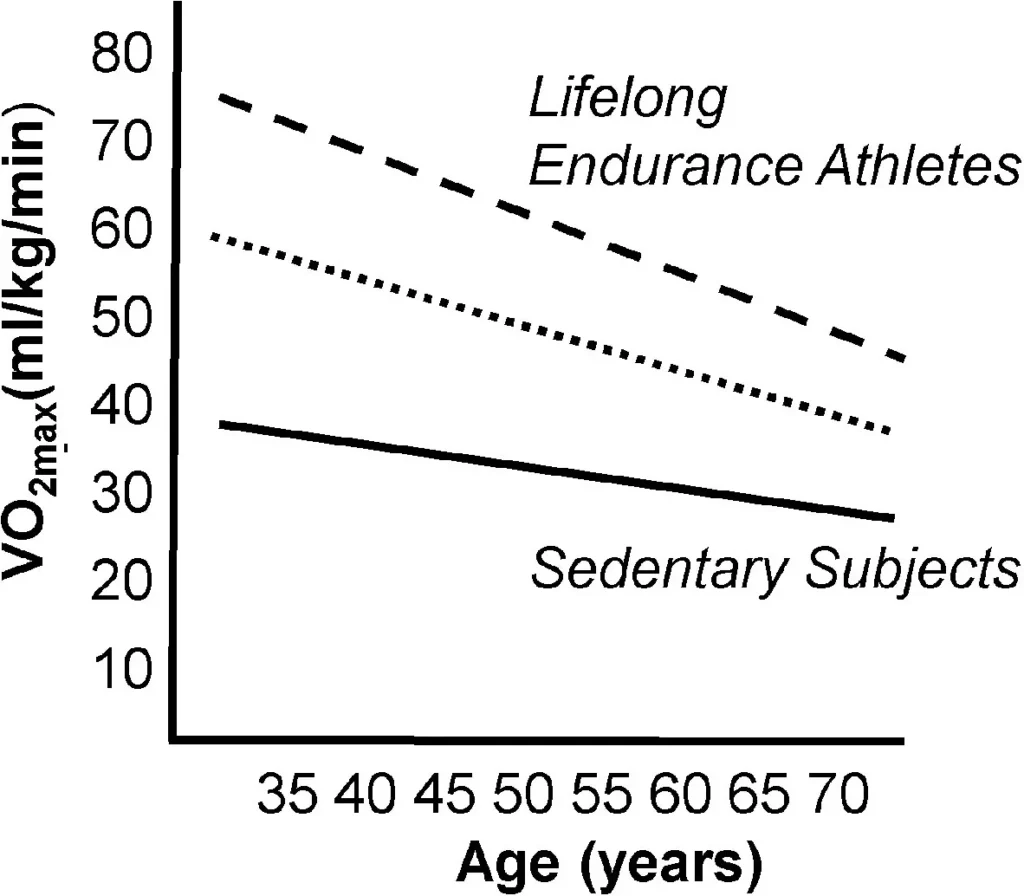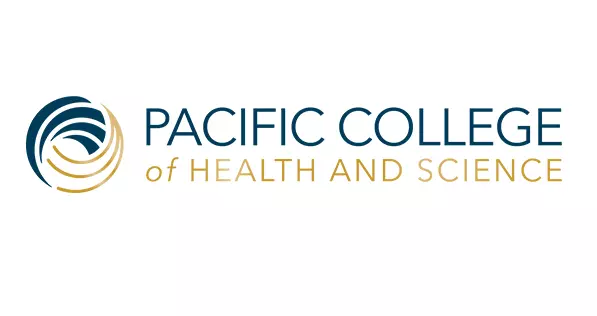This article was originally published in the Winter 2023 edition of the AIM Newspaper. Read the full paper for free.
Breathing: the taking in of oxygen (O2) and the expelling of carbon dioxide (CO2) that should occur naturally and seamlessly without pathology. O2 is not only in our lungs, but all parts of our bodies, supplying our cells with nutrients. O2 also allows for metabolic processes to occur which in turn give us energy and life.
The Vital Role of Oxygen in Body Functioning
What happens when we hold our breath? Oxygen levels decrease, CO2 builds up, and as this happens, cellular metabolism and gas exchange are halted. If this continues for over two minutes, it is likely that a person will pass out; over four minutes, brain damage will occur; and over six minutes, death is possible. Our bodies need O2 to produce energy and fuel every process in our body.
As an exercise physiologist, I can measure the maximum amount of O2 consumption attainable during specific exercise protocol utilizing a gas analyzer. This is called VO2 max. It is interesting to note that research shows a direct correlation between VO2 max and longevity (1). The chart below shows survival or longevity of different “performance” groups based on their VO2 max.

Understanding VO2 Max and Its Impact on Longevity
It is postulated that the higher a VO2 max value is, based on gender and age, the longer a person will live if we remove “accidental causes” from the equation. Dr. Peter Attia summarizes this graph the with the following statements.
Enhancing Longevity Through Breathwork and Exercise
“Going from low to just below average is a 50% reduction in mortality over a decade. If you then go from low to above average, it’s about a 60% or 70% reduction in mortality. If you compare someone of low fitness to elite, it is a fivefold difference in mortality over a decade. If you then go from low to above average, it’s about a 60% or 70% reduction in mortality (3).”
Fortunately, VO2 max is not fixed and can be improved through exercise and, more specifically, exercising within certain heartrate zones for certain amounts of time.* Our oxygen and metabolic needs change in different heartrate zones. Stressing (or exercising) the body in different zones allows for super-compensation of our systems if this is done correctly. This super-compensation means that the body can uptake more oxygen and expel more CO2, thereby strengthening our entire system, making us more metabolically efficient, modifying glucose levels, strengthening the muscles of respiration (diaphragm, intercostals, abdominals) and increasing longevity.
When I utilize a VO2 max test with a gas analyzer, with certain clients—mainly the untrained—I can visibly see distress in all areas of the body: face, thorax, legs, and so on. The data that I collect quantifies this distress; these clients have a lower ability to uptake and utilize oxygen, especially as heart rates go up. As mentioned above, luckily, these numbers and ranges can be improved with a quality exercise regimen.
If you think a career in holistic medicine is something you would like to pursue, contact us and speak to an admissions representative to get started on your new journey!
The Transformative Power of Controlled Breathwork
Research has also shown that a disturbance in the oxygen-carbon dioxide balance can cause or impact disease (1). Disturbance of oxygen–carbon dioxide homeostasis has been shown to have an impact on cancer and many other diseases, with some experts believing it is at the root of all disease (1).
What can be done to correct this? Breathwork: conscious, controlled breathing done especially for relaxation, meditation, or therapeutic purposes (5). Taiji, qigong, other forms of martial arts, yoga, and Chinese medicine have been emphasizing breathwork for thousands of years. In Chinese medicine, qi is air, or life-force. Without qi, or air, there is no life, and with compromised qi, life is also compromised.
By combining traditional and empirical data from Chinese medicine, meditation, and other traditional medicines that focus on breathwork with modern research, we can see that this conscious and controlled breathwork leads to a state of well-being, health, and longevity.
In a ten-year experiment with cancer patients, researchers found that morning breath exercise prolonged lifespan by improving hyperventilation in people with respiratory cancer (1). Kunz and Ibrahi have proposed that tissue hypoxia may serve as a central factor for carcinogenesis, invasion, aggressiveness, and metastasis (6). Other hypotheses postulate a connection between the prolonged survival rate of those cancer patients undertaking a regular morning breathwork exercise regimen, linking it to a reduction in hyperventilation and psychological factors.
It is important to know that hyperventilation, which is usually rapid or deep uncontrolled breathing, can cause a build-up of CO2 leading to symptoms of dizziness, light-headedness, impaired thinking, heart palpitations, confusion, numbness, sleep disturbance, muscle spasms, and more (6). This can put people into a state of flight or fight, over-taxing the sympathetic nervous systems, releasing too many stress hormones into the blood stream, and overall depleting the body making it more susceptible to disease. This is often seen in anxiety or panic attacks.
Knowing this information, we can now ask: what type or style of breathwork can lead to these positive outcomes? To make this easy, we can skip over popularized, mainstream, commercial, breathing information and go straight to the research. The research shows that any breathing technique that directly slows the breath down to ten breaths per minute can achieve the benefits of mental and physical well-being: relaxation, focus, and ultimately increased longevity, if done regularly (7).
To go a step further, “diaphragmatic breathing” or “deep breathing,” defined as an efficient integrative body–mind training for dealing with stress and psychosomatic conditions, involves contraction of the diaphragm, expansion of the belly, and deepening of inhalation and exhalation, which consequently decreases respiration frequency and maximizes the amount of blood gases. Benefits of diaphragmatic breathing have been investigated in association with meditation and ancient Eastern religions (such as Buddhism) and martial arts (8). It is a core component of yoga and taiji and contributes to emotional balance and social adaptation (8). Neuroendocrine response in terms of reduced cortisol levels is largely linked to this type of breathwork.
Lastly, since we can breathe through both our nose and/or our mouths, this should be discussed. In the traditional forms of conscious breathing, such as taiji or qigong, the mouth is kept closed and focus placed on breathing through the nose. Modern research has shown that nasal breathing for the majority of the time is superior to mouth breathing and cognitive decline can be linked to mouth breathing (9). Oral health, dento-facial development, and changes in facial morphology have also been linked to mouth breathing (10).
Given this data, it appears that ten breaths per minutes with a closed mouth focusing on diaphragmatic breathing may lead to the best results.
Without O2, death is inevitable, and with compromised O2, longevity may be compromised. Luckily, our body houses a unique computer system that allows us to breathe without thinking about inhaling and exhaling to keep us alive. We can take further steps to live optimally and well for a long time by improving VO2 max with tailored zone training, and breathwork as mentioned above can tap into multiple areas to maximize longevity and performance.
*I recommend contacting an exercise physiologist with a medical clearance to have your patients safely tested for VO2 max. This will tell you the correct training zone and allow you to establish an exercise program.
References
- Wu, Wei-Jie MBa; Wang, Shan-Huan MBa,b; Ling, Wei MDa; Geng, Li-Jun MPhila; Zhang, Xiao-Xi PhDa; Yu, Lan MPhila,c; Chen, Jun MPhila,c; Luo, Jiang-Xi MDa,c; Zhao, Hai-Lu PhDa,*. Morning breathing exercises prolong lifespan by improving hyperventilation in people living with respiratory cancer. Medicine 96(2):p e5838, January 2017. | DOI: 10.1097/MD.0000000000005838
- Mandsager K, Harb S, Cremer P, Phelan D, Nissen SE, Jaber W. Association of Cardiorespiratory Fitness With Long-term Mortality Among Adults Undergoing Exercise Treadmill Testing. JAMA Netw Open.2018;1(6):e183605. doi:10.1001/jamanetworkopen.2018.3605
- Attia, Peter. How Does VoMax Correlate to Longevity? peterattia.com, May 17, 2022.
- https://pnoe.com/blog/performance/the-way-you-breathe-offers-the-most-holistic-picture-of-your-body-5/https://pnoe.com/blog/performance/the-way-you-breathe-offers-the-most-holistic-picture-of-your-body-5/
- https://www.merriam-webster.com/dictionary/breath%20work
- Kunz M, Ibrahim SM. Molecular responses to hypoxia in tumor cells. Mol Cancer 2003;2:23doi:10.1186/1476-4598-2-23.
- Zaccaro A, Piarulli A, Laurino M, Garbella E, Menicucci D, Neri B, Gemignani A. How Breath-Control Can Change Your Life: A Systematic Review on Psycho-Physiological Correlates of Slow Breathing. Front Hum Neurosci. 2018 Sep 7;12:353. doi: 10.3389/fnhum.2018.00353. PMID: 30245619; PMCID: PMC6137615.
- Ma X, Yue ZQ, Gong ZQ, Zhang H, Duan NY, Shi YT, Wei GX, Li YF. The Effect of Diaphragmatic Breathing on Attention, Negative Affect and Stress in Healthy Adults. Front Psychol. 2017 Jun 6;8:874. doi: 10.3389/fpsyg.2017.00874. PMID: 28626434; PMCID: PMC5455070.
- Zelano C, Jiang H, Zhou G, Arora N, Schuele S, Rosenow J, Gottfried JA. Nasal Respiration Entrains Human Limbic Oscillations and Modulates Cognitive Function. J Neurosci. 2016 Dec 7;36(49):12448-12467. doi: 10.1523/JNEUROSCI.2586-16.2016. PMID: 27927961; PMCID: PMC5148230.
- Zheng W, Zhang X, Dong J, He J. Facial morphological characteristics of mouth breathers vs. nasal breathers: A systematic review and meta-analysis of lateral cephalometric data. Exp Ther Med. 2020 Jun;19(6):3738-3750. doi: 10.3892/etm.2020.8611. Epub 2020 Mar 19. PMID: 32346438; PMCID: PMC7185155.
Featured Posts:

